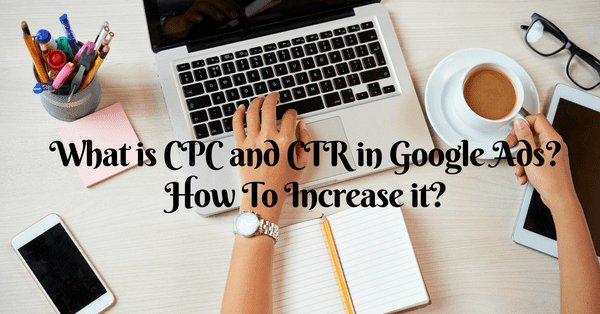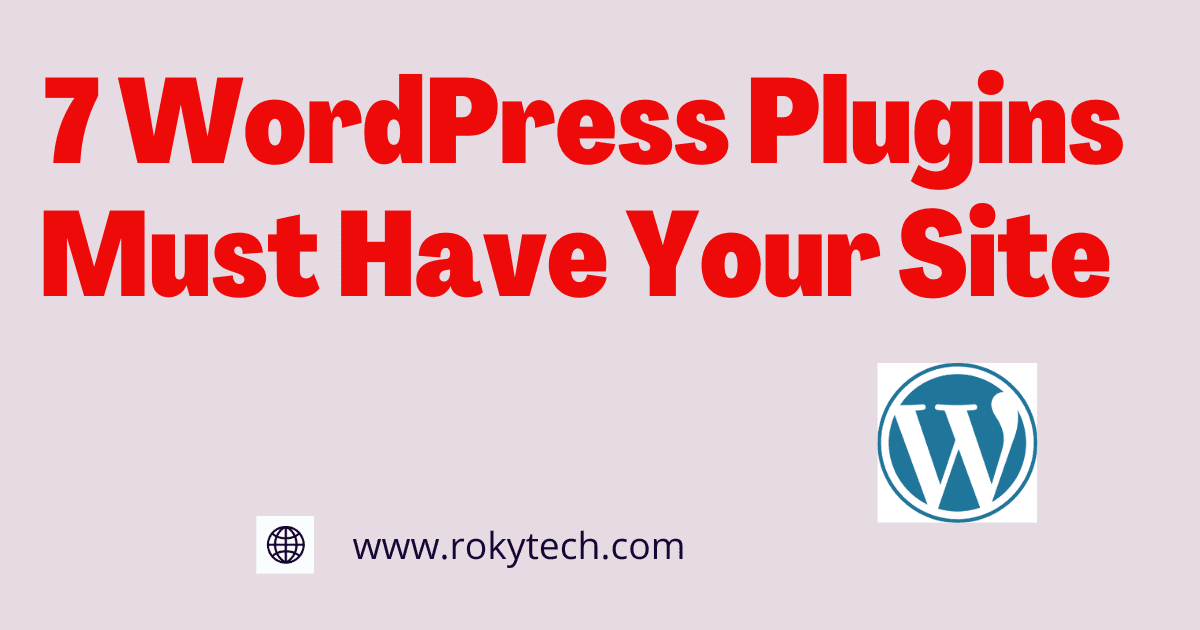In the busy world of online marketing, understanding the importance of CPC and CTR in Google Ads is like using a powerful compass to guide you through the digital environment.
So what exactly are CPC and CTR and how can you use their power to improve your website? Let’s begin the journey to uncover these ideas and discover practical strategies to increase their impact.

Now, once we understand CPC and CTR, the question arises: How can you optimize these metrics to propel your website to greater success? The answer lies in the process of practical development, creativity and continuous improvement.
Join us as we dive deeper into the world of CPC and CTR and discover new and proven methods to improve your website performance. From basic keywords to ad placement, from A/B testing to landing pages, we guide you through online marketing with its definition and goals.
Absolutely! Let’s take a look at understanding CPC (cost per click) and CTR (click-through rate) and explore ways to improve them.
What is CPC (Cost Per Click)?
CPC measures how much an advertiser pays each time someone clicks on their online ad. This is the spotlight where advertisers claim the ability to engage their target audience and drive traffic to their websites. It’s a crucial metric in online advertising because it directly impacts your return on investment (ROI). Here’s how it works:
1. Bidding System: CPC marketing operates under the pay-per-click (PPC) model used by platforms like Google, Facebook, and Amazon. Advertisers bid on relevant keywords related to their product or service.
2. Ad Display: When someone searches for those keywords (e.g., on Google), your ad appears in the search results.
3. Payment: You pay only when someone clicks on your ad and visits your webpage.
4. Factors Affecting CPC: The amount you pay per click depends on your bid amount, ad quality score, and competition.
To calculate Cost Per Click, use the following formula:
CPC= Total Ad Cost/Total Number of Clicks
For example, if you spent $100 on a PPC campaign and received 500 clicks, your CPC would be 20 cents:
CPC= $100/500 = $0.20
What is CTR (Click-Through Rate)?
CTR represents the percentage of clicks on an ad compared to the number of impressions (how often your listing appeared on a search engine results page). It gauges how effective your search engine listing is in attracting visitors to your webpage.
CTR measures the effectiveness of your ad in persuading users to take action. It is an engagement monitor that shows click-through rates and provides valuable insight into what your target audience thinks.
– If your CTR is 5%, it means 5 out of every 100 people clicked through to your website.
– Higher CTR leads to more website visits and potential customers.
Strategies to Improve CPC and CTR:
1. Keyword Optimization:
Conduct thorough keyword research to identify high-performing keywords relevant to your product or service. Focus on long-tail keywords with lower competition to potentially reduce CPC and increase CTR.
Ensure that your landing pages are optimized for relevance, speed, and user experience. A seamless transition from ad to landing page can increase conversion rates and improve overall campaign performance.
– Choose relevant keywords for your ads.
– Write compelling ad content.
– Optimize landing pages to match keywords.
2. Quality Score Enhancement:
Enhance your ad’s Quality Score by optimizing ad relevance, landing page experience, and expected click-through rate. A higher Quality Score can lead to lower CPCs and higher ad positions, ultimately improving CTR.
– Improve your quality score by optimizing landing pages and keywords.
– Higher quality scores lead to better ad positions and lower CPC.
3. Ad Placement and Formats:
– Optimize ad placement for better visibility.
– Experiment with different ad formats (text, display, video).
4. Long-Tail Keywords:
– Target-specific, less competitive keywords.
– Long-tail keywords often have higher CTR.
5. Data-Driven Optimization:
– Analyze top-performing ads and optimize them.
– Use data analytics to refine your strategy.
6. Content Quality:
– Create high-quality content that resonates with your audience.
– Relevant, engaging content can boost CTR.
7. Compelling Ad Copy:
Craft persuasive ad copy that resonates with your target audience and encourages them to take action. Highlight unique selling points, promotions, or incentives to entice clicks.
8. Ad Extensions:
Utilize ad extensions such as site links, callouts, and structured snippets to provide additional information and increase the visibility of your ads. Extensions can improve ad relevance and attract more clicks.
Read- 8 Best Chrome Extension Tools for Chrome Extension Tools.
9. Ad Scheduling and Geotargeting:
Analyze data to identify peak times and locations for your target audience’s online activity. Schedule ads to appear during these optimal periods and geotarget specific regions to maximize engagement and CTR.
10. Ad Testing and Optimization: Continuously test different ad variations, headlines, and images to identify what resonates best with your audience. Analyze performance metrics to refine your ads and improve CPC and CTR over time.
Remember that industry benchmarks for CTR vary, so compare your performance to relevant data within your niche. By implementing these strategies, you’ll enhance your ad campaign performance and drive better results!
Is CPC more important than CTR?
Both CPC and CTR in Google Ads are important metrics, but their significance can vary depending on the specific goals and objectives of a campaign.
CPC is crucial because it directly affects the cost-effectiveness of advertising campaigns. A lower CPC means that advertisers pay less for each click, maximizing the return on investment (ROI) and stretching the advertising budget further. For campaigns with a strict budget or a focus on cost efficiency, minimizing CPC is a primary concern.
On the other hand, CTR is equally important as it reflects the relevance and engagement level of ads with the target audience. A higher CTR indicates that a larger percentage of users are clicking on the ad after seeing it, demonstrating its effectiveness in capturing attention and generating interest. A high CTR typically correlates with higher ad relevance, which can lead to better Quality Scores, lower CPCs, and improved ad positions.
Ultimately, the importance of CPC versus CTR depends on the campaign objectives. For campaigns focused on maximizing clicks within a fixed budget, CPC may take precedence.
However, for campaigns aimed at increasing brand visibility, driving traffic to a website, or improving overall ad performance, CTR may be of greater importance. In many cases, finding the right balance between CPC and CTR is key to achieving optimal campaign results.
How to Increase Page CPC and CTR in Google Ads of a Blog Post?
Certainly! Let’s explore strategies to increase CPC and CTR in Google Ads for your blog post:
1. Improve Click-Through Rate (CTR):
- Definition: CTR represents the relationship between clicks on your link (clicks) and the number of times your listing appeared on a search engine results page (impressions).
- Importance: A higher CTR means more people visit your website, bringing you closer to potential customers.
- Benchmark: The average CTR varies by industry, so consider industry-specific benchmarks¹.
Tips to Improve CTR:
- Match Title Tag to H1 Tag: Ensure your title tag aligns with your H1 tag for consistency.
- Optimize Ad Text: Craft compelling ad content that highlights perks like free shipping or exclusive deals.
- Use CTAs: Include call-to-action phrases like “buy,” “order,” or “sign up” to entice users to click.
- Enhance Assets: Add extra information (e.g., call buttons, location details) within your ad¹.
2. Increase CPC (Cost Per Click):
Create Relevant Ads: Design ads that resonate with your audience and match your content.
Compelling Ad Content: Craft ad text that attracts visitors and encourages them to click.
Optimize Landing Pages: Ensure your landing pages are mobile-friendly, load quickly, and use high-quality visuals and videos.
3. Google AdSense Tips:
– Place two ads within your blog post content and one outside the post:
– Keep a 336 x 280 large rectangle ad below the title at the top of the blog post.
– Place a 468 x 60-sized banner ad in the middle of the blog post.
Remember that continuous monitoring, testing, and optimization are key to improving both CPC and CTR in Google Ads. Experiment with different strategies and analyze the results to find what works best for your specific blog post.
In conclusion, understanding CPC and CTR in Google Ads is essential for navigating the landscape of Google Ads effectively.CPC directly impacts budget allocation, while CTR reflects ad relevance and engagement. By implementing these strategies, advertisers can enhance campaign performance, maximize ROI, and achieve their marketing goals in the competitive realm of online advertising.




